On the coast of California, where ships heading south for LA turn into the Santa Barbra Channel, there is a place called Honda.1 Even on this desolate and treacherous stretch of coast, it stands out for danger to mariners. The Spanish who first sailed past it called it the Devil's Jaw, and it has eaten many ships over the years.
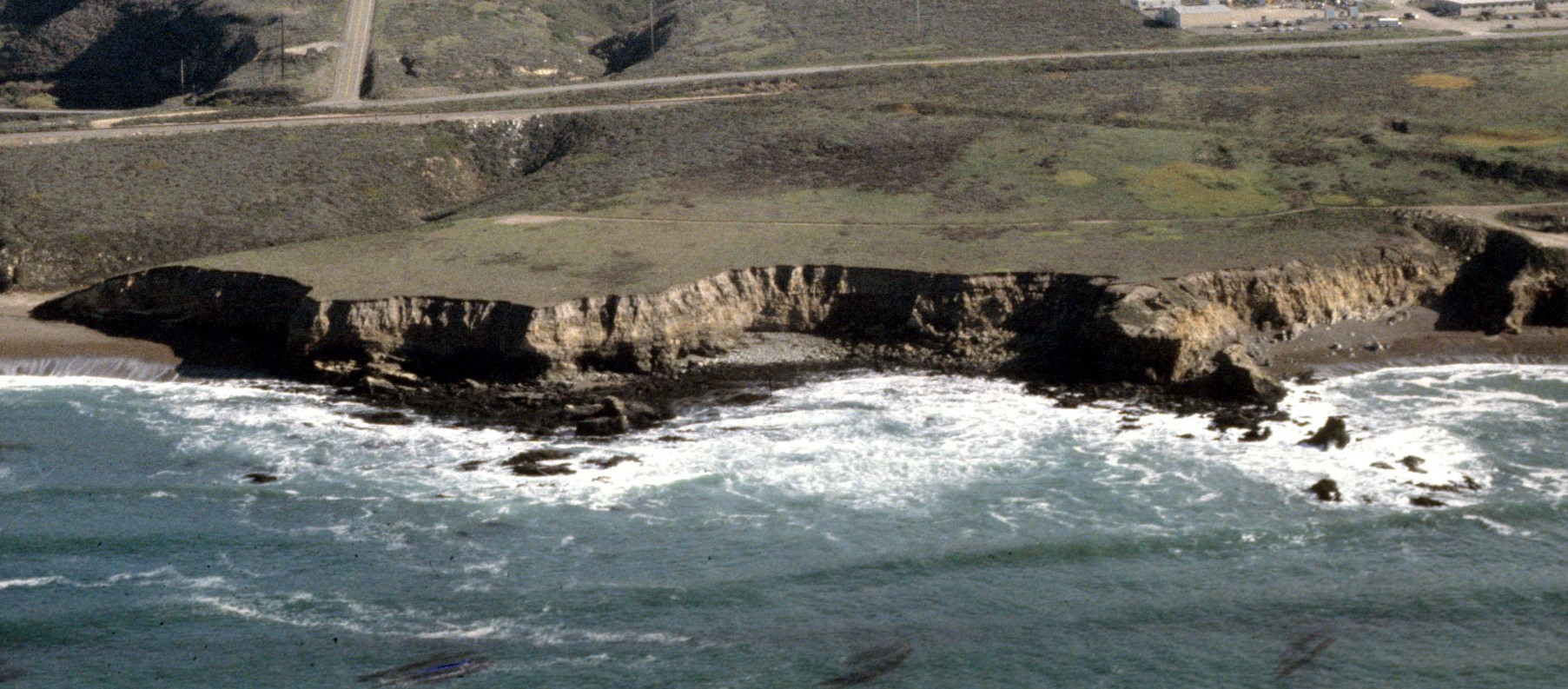
Honda Point in 1989
On September 8th, 1923, Destroyer Squadron 11, under the command of Captain Edward Watson, left San Francisco following the successful conclusion of Fleet Week, bound for San Diego and home. A new fiscal year had just started, and the Navy's fuel budget was slightly more generous, so Admiral Sumner Kittle, Commander of the fleet's destroyers, ordered the run made at 20 kts. This was as fast as a destroyer could go on her cruising turbines if her plant was working well. If a crew had to fire up the main turbines, it would take significantly more fuel. In an interwar Navy where inter-ship competitions were taken very seriously, that would damage their standing in the engineering efficiency ratings.
The 14 destroyers spent the morning at battle practice, the fire control teams using other ships for targets while the rest of the gunnery team worked at the loading machines. As evening fell, Watson ordered the ships into column behind his flagship, Delphy, to ensure against incidents in the low visibility. The coast had last been visible before noon, and the ships were navigating by dead reckoning, figuring out where they would be based on courses and speeds they'd measured. A new system, based on radio direction finding, had been established along the coast, but it wasn't particularly reliable, and Donald Hunter, captain of Delphy and a very experienced navigator, decided that it must be wrong when it showed him to be much further north than his own estimates. Navigators on other ships weren't so sure, but nobody questioned orders when the flagship ordered them to turn east at 2100.
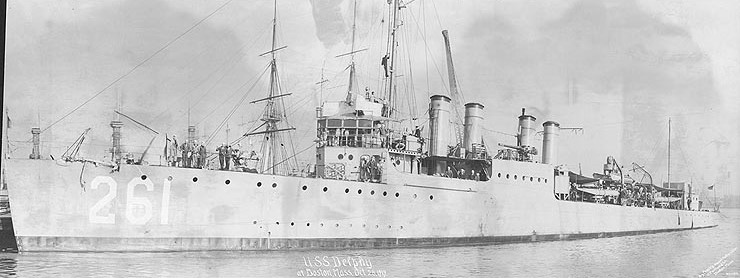
Delphy at Boston Navy Yard
When they made the turn, visibility was over a mile, but five minutes later, Delphy plunged headlong into a pea-soup fog, cutting visibility to zero. Seconds later, her crew heard the scraping of her bottom touching gravel, then a shattering crash as she ran headlong into Honda. Hunter was on the bridge, and he reacted instantly, ordering the siren sounded to alert the following ships of the danger. The formation ordered should have seen the vessels 250 yards apart bridge to bridge, and their 20 kt speed mean that each was closing in on the danger at 11 yards every second. The rest of the crew sprang into action, and tried to back Delphy off, but it was to no avail. She was stuck fast, and the boiler rooms were flooding rapidly. It was clear that she was doomed, and the problem changed from saving the ship to getting her crew to safety before she broke up on the rocky coast. Three men were already dead aboard, and keeping the rest from joining them would be difficult.
The next astern, S. P. Lee, had lost 200 yards during the turn thanks to an inexperienced helmsman, giving her a few extra seconds when Delphy loomed out of the fog. Her captain ordered full reverse and full left rudder, and the groaning ship narrowly missed Delphy. However, it wasn't quite enough, and S. P. Lee struck the rocks to the north of Delphy, broadside to the sea. The waves rocked her back and forth, and despite the best efforts of her engine crew, she was stuck fast and flooding rapidly.
Behind Lee came Young, actually the first of the ships to run into trouble. A minute or so before Delphy struck, she ran across a submerged pinnacle of rock, ripping her starboard side open. Within seconds, it was obvious that she was in a bad way, and she steered out to the right, breakdown lights briefly blazing before the generator was doused, along with the engines. The wind pushed the crippled destroyer onto the rocks, and the order was given to prepare to abandon ship. But the danger of the waves and surf meant that the Captain chose instead to keep his crew onboard, although they had to scramble over to the port side as Young's list grew. Only 90 seconds after she first struck, she was on her starboard side, and all of the crew, except for 20 men who would never make it out, were huddled on the port plating, hoping for some kind of rescue.
The fourth destroyer in the column, Woodbury, saw the problems that afflicted the three previous ships, but not in enough time to save herself. Her captain ordered a hard turn to starboard, hoping to avoid Young, but found his ship hard aground, with her bow trapped against a massive, jagged rock on the starboard side. Five men were ordered to jump across the gap and rig lines in case they had to abandon ship, aided by a searchlight that also revealed the plight of the crew of Young. Despite flooding forward, the Captain ordered maximum effort to back the ship off the rocks, which lasted for an hour before flooding finally forced the engineering crew to abandon their posts.
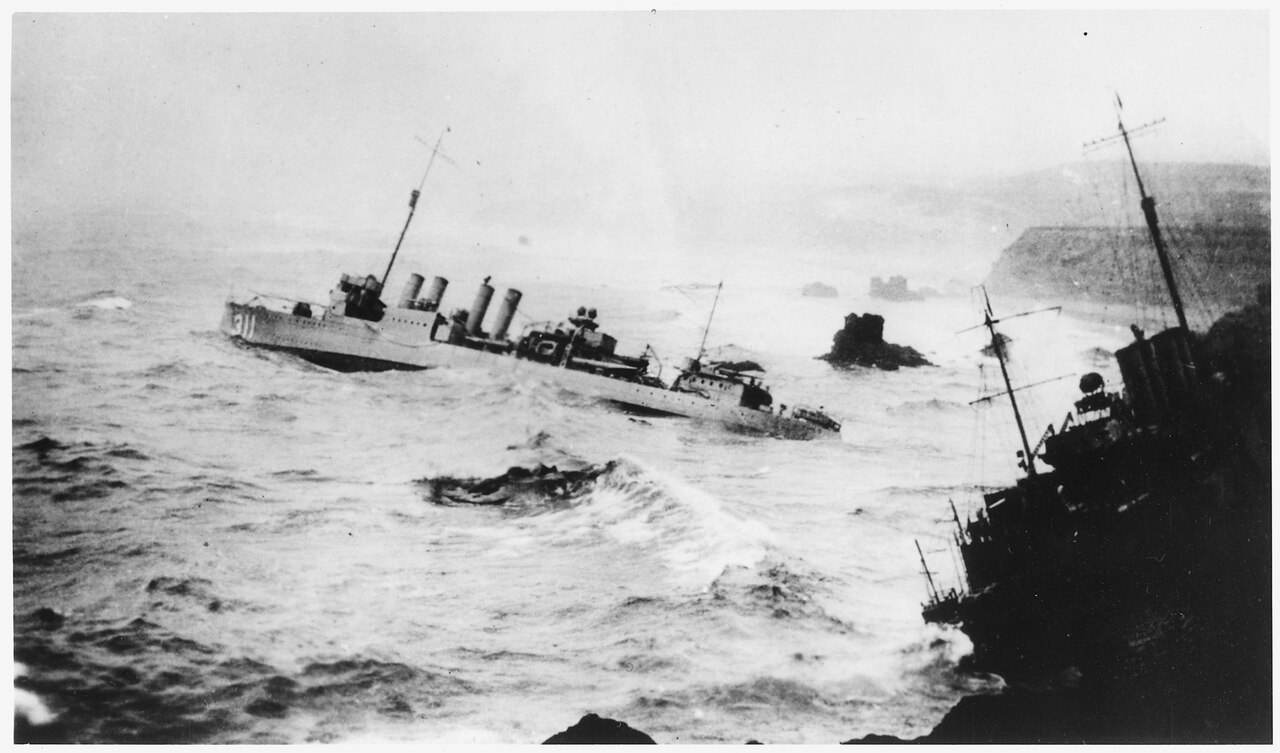
Nicholas, photographed the next morning from S.P. Lee
Nicholas was the last destroyer in the lead division, 99 seconds behind Delphy, and when her captain saw the chaos erupting ahead as the leading destroyers peeled off in their quest to avoid danger, he ordered left full rudder, sending his ship skidding across the sea. She almost made it to safety, but her starboard propeller struck a submerged rock, sending that shaft racing. It was stopped, while the other prop was backed, leaving the ship helpless in the face of the waves. They pushed Nicholas’s bow to the west and drove her onto the rocks, where she stuck fast, despite the best efforts of her crew to pull her clear with her remaining propeller. Within twenty minutes, water was lapping at the floor-plates of the engine rooms, and the crew was forced topside. Nicholas had ended up in a very exposed position, with waves from the Pacific cascading over the men huddled on deck.
Nicholas was followed by Farragut, flagship of Destroyer Division 31. Just as she made the turn to the east, her bridge crew spotted the chaos ahead of her and tried to slow before ordering the engines back and a turn to starboard. Unlike the ships ahead, Farragut managed to stop without touching anything, giving her crew a view of the capsizing Young 100 yards ahead, but no indication of the wider situation. As they tried to figure out what was going on, a flare from the stacks of one of the destroyers battling to free themselves from the rocks illuminated the whole tableau. Instantly, they realized the situation they were in, and the captain decided to try to back out the way he had come in. Unfortunately for him, the engine crews were a bit overenthusiastic with their throttles, and starved the generators of steam, killing power throughout the ship and dousing her lights.
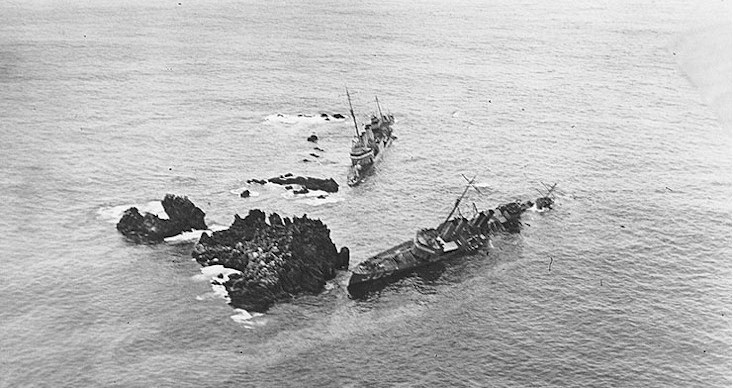
Woodbury and Fuller aground
Into this situation came Fuller, the ship behind Farragut in the long line of destroyers. She had struck an underwater rock moments earlier, badly gashing her side. The water flooding in had doused the boiler fires even before report could be made to the bridge, and she was now without power even as she plunged towards the rocks, and towards Farragut. The captain of the lead destroyer ordered this starboard engine ahead, hoping to twist out of Fuller's way. It almost worked, but Fuller struck a glancing blow amidship, denting Farraguts side and destroying her whaleboat. Then she was past and onto the rocks, leaving the way clear for Farragut to return to the open sea. But Honda wouldn't let her escape that easily, and on the way out, she briefly grounded as a particularly large wave dumped her on the bottom before resuming her passage to safety. Eventually, she was able to anchor well offshore and repair her damage, but without a small boat, she was unable to help rescue the men of the grounded destroyers. Fuller was not so lucky, and despite the efforts of her crew to get an anchor out, she was swiftly driven onto the rocks near Woodbury, with a 45° list as her crew huddled on deck for safety.
The next destroyer in line, Percival, was the first to escape unscathed. She was some distance to port of the rest of the line, and when things began to unfold ahead, her captain rapidly stopped her and turned off to port. After the searchlight revealed Young, he ordered a withdrawal the way he came in. Behind Percival was Somers, whose captain was suspicious of Delphy's reported position. He turned to starboard in the nick of time, with breakers appearing 50' off to port, and despite reversing, the ship's bow struck, flooding several compartments in the double bottom, but leaving the ship afloat and free.
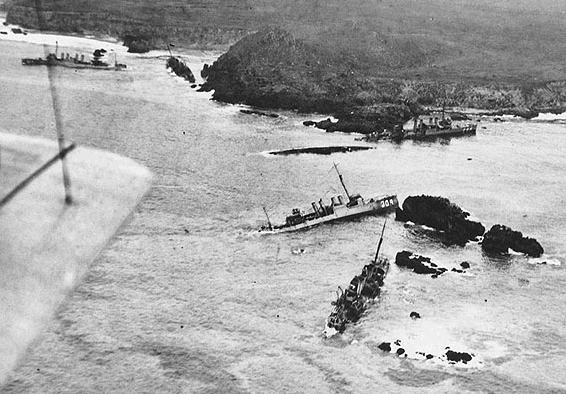
Next astern of Somers was Chauncey, the last ship of Destroyer Division 33. Her crew was far enough back to get some inkling of the looming disaster, but despite reducing speed and making several turns to slow down, they continued on the same base course, only figuring out what was happening when they saw Delphy and Young up against the rocks. The engines were reversed, but it was too late to keep away from Young, with the crew of the capsized destroyer worried that Chauncey would push them off the ledge and into deep water. They avoided this fate, but Young’s propeller sliced into Chauncey’s engine room, and the loss of power allowed the waves to push the destroyer onto a reef, although she was almost dead in the water, and her grounding was gentle enough that her Captain initially entertained hopes of getting her off at high tide, before the pounding waves began to push her towards the cliffs.
Following was Destroyer Division 32, whose officers had begun to suspect that they were out of position even before Delphy struck, and the Division Commander, Walter Roper, belayed the order to turn east, leaving his ships, Kennedy, Paul Hamilton, Stoddert and Thompson, reasonably far clear of the rocks, although the crews would probably not have put it that way when they began taking soundings and discovered only 7 fathoms (42') of water, far less than they were comfortable with. They quickly began to back out to sea, eventually reaching safety and spending the night well offshore, with only a fragmentary idea of what was happening at Honda.
Next time, we will pick up our story with a look at the efforts of the crews to get ashore, and the discovery of the accident by the wider world.
1 There is no relation to the car manufacturer. ⇑

Comments
Wow, I was completely unaware of this disaster until this post. I cannot believe how many ships were involved--worse than a fleet action. I look forward to the next article.
When you write:
"Navigators on other ships weren’t so sure, but nobody questioned orders when the flagship ordered them to turn west at 2100."
Was this supposed to be East? I do not know the California coastline too well but it seems to me that to make this channel, heading south, it would be a turn to the east?
So this is essentially the USN's version of the 1893 HMS Victoria disaster?
Only more disastrous
@James
Yeah, that should have been east.
...Best summary I've seen of a very bad night off the California coast. My compliments.
Excellent narrative Bean! Thank you for this one.
It reminds me of the Thunderbird crash in 1982.
How many sailors were in peril as a result of these seven destroyers crashing onto the rocks?
I don't have exact numbers offhand, but I believe each destroyer had 110-120 aboard. So 800, but with fairly large error bars.
They were all the same class, with a standard crew of 122 each at some point, but I don't know whether that standard remained constant throughout the class's life, or how closely it was followed in practice. 23 died.
After looking at a map I finally understand. The admiral thought he was turning them east into the Santa Barbara channel, right?
The captain rather, my bad. Were commodores out of fashion at that point, or did a destroyer squadron not merit one?
Bernd: At the time Commodore was a job title (which he had), not a rank.
While English doesn't call its ranks Capitaine de corvette / Capitaine de frégate / Capitaine de vaisseau, it does use them that way: a Captain (rank) might be the captain (role) of a large ship or the unit commander of several smaller ones, while an individual destroyer's captain might be a Lieutenant Commander.
How does responsibility for the ship work in a case like this? On one hand, the captain of the ship is ultimately responsible for everything that happens onboard. On the other hand, they were ordered to maneuver as they did.
@Garrett: in this case both were blamed, but only the squadron commander was actually punished. (Rules may differ in other times and places.)
The little marine aquarium (now closed) along the main waterfront road in Morro Bay had a ships bell retrieved from one of the Honda Point losses. I have a picture somewhere, if I can find it.
No idea of where it (the bell) went after the closing.